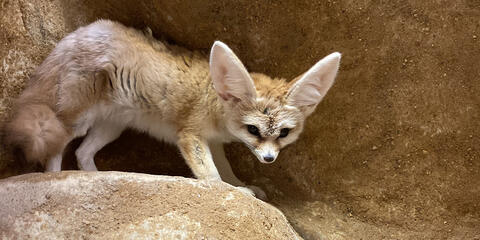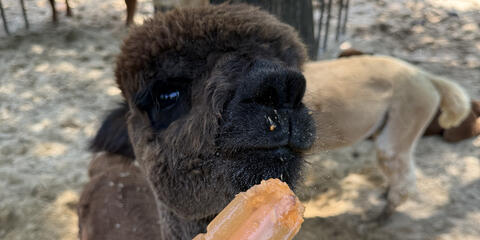Physical Description
Green salamanders are mottled green and black, gray or brown with lighter bellies that are bluish grey to pale yellow. This mottled patterning provides the green salamander with camouflage from predators, especially when hiding among the mosses and lichen its skin resembles. Their flattened bodies, long limbs and square-shaped toes help them to easily climb and fit into rock and log crevices.
Size
Adults may reach 3 to 5 inches (7.6 to 12.7 centimeters) in length, with females measuring slightly longer than males.
Native Habitat
Green salamanders are indigenous to the Appalachian region, with a patchy distribution from southern Pennsylvania to northern Alabama and Mississippi. Isolated populations occur west to Indiana and east to North and South Carolina.
They prefer rocky habitats, including sandstone and limestone outcroppings or caves and are most often found in tree or rock crevices. When not tucked into a crevice, green salamanders can be found among other moist or damp environments, including bark, leaves and logs.
Lifespan
Lifespan for the green salamander is unknown.
Food/Eating Habits
In the wild, green salamanders feed on a wide variety of small invertebrates, including arachnids, insects, snails and slugs.
At the Smithsonian's National Zoo, green salamanders receive a mixture of crickets, fruit flies, bean beetles, isopods, springtails and black worms.
Sleep Habits
From approximately December to April, green salamanders are largely inactive. During the warmer months, they are primarily nocturnal in search of food.
Reproduction and Development
Green salamander breeding season is from May to late September. Males breed annually, while females breed every other year. Females lay between 10 and 30 eggs in rock or log crevices and guard their eggs until they hatch 80 to 90 days later. Young stay with their mother for one or two months and will reach maturity around the age of three.
Conservation Efforts
Green salamanders are threatened by development of roads, over-collecting, habitat loss, over-harvesting, disease and drought.
This species occurs in many protected areas and is regionally listed as endangered or threatened in many of the states where it occurs.
Help this Species
- Share the story of this animal with others. Simply raising awareness about this species can contribute to its overall protection.
- Avoid single-use plastics, such as plastic bottles, bags and utensils. Choosing reusable options instead can help reduce plastic pollution.
- Protect local waterways by using fewer pesticides when caring for your garden or lawn. Using fertilizers sparingly, keeping storm drains free of litter and picking up after your pet can also improve watershed health.



